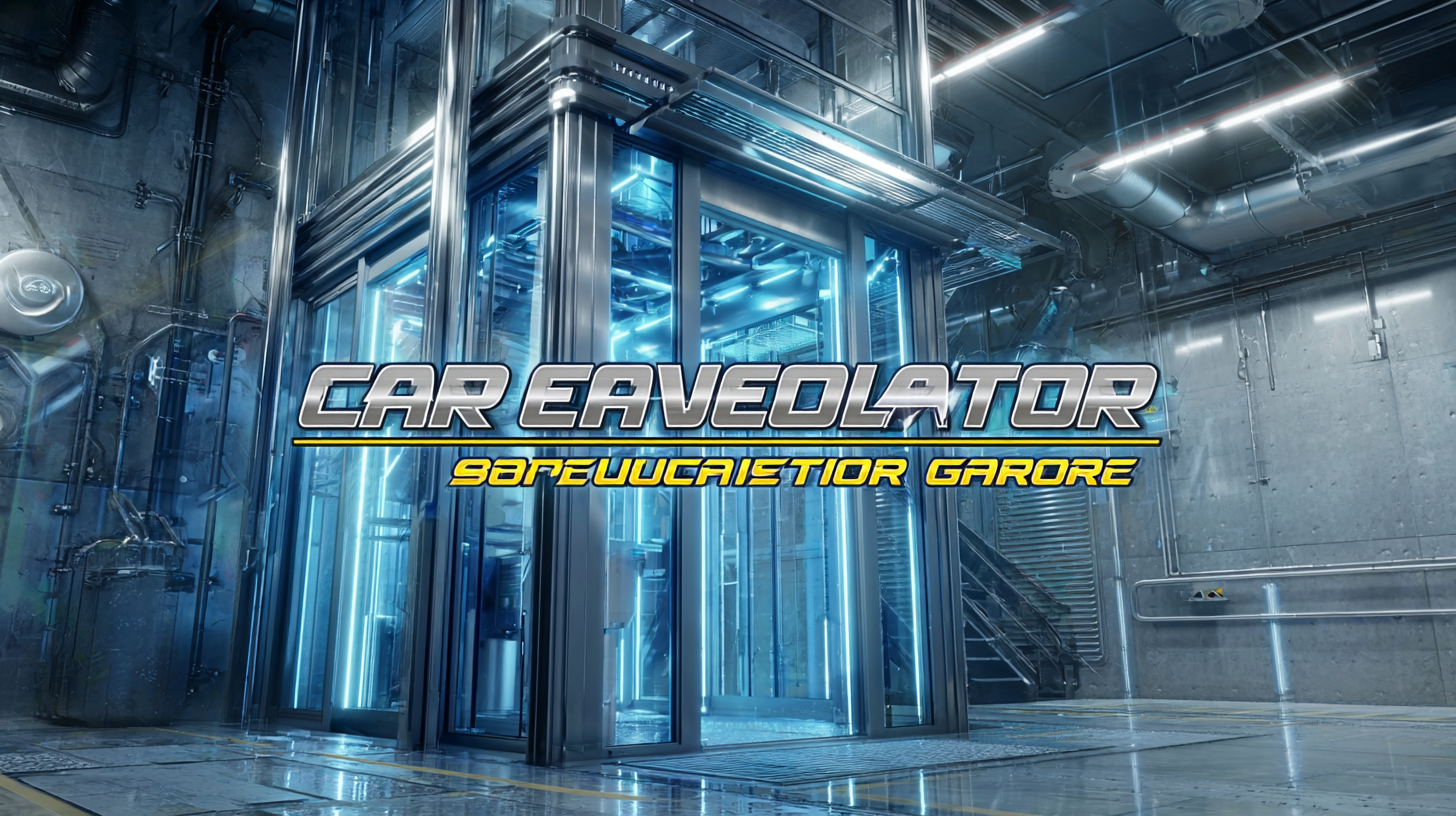In the evolving landscape of urban living, space constraints have driven the demand for innovative solutions such as the Car Elevator Garage, a modern approach to vehicle storage. According to a report by Grand View Research, the global car lift market size was valued at $2.4 billion in 2020 and is projected to expand at a 8.0% CAGR from 2021 to 2028, highlighting a significant shift towards automated parking systems. These advanced installations not only optimize space but also enhance convenience and safety in vehicle management. Key technical specifications, including load capacity, speed, and safety features, play a crucial role in determining the best Car Elevator Garage solutions on the market. This blog will delve into these specifications, integrating relevant statistics and insights to guide consumers in making informed decisions when choosing the best garage solutions to meet their specific requirements.

When considering the best car elevator solutions for garages, it’s essential to focus on key features that enhance functionality, safety, and convenience. A reliable car elevator should boast a robust construction that can support varying vehicle weights and sizes. Additionally, look for models equipped with hydraulic systems for smooth and efficient operation. Safety features such as automatic locking mechanisms and emergency brakes are vital for preventing accidents and ensuring peace of mind while using the elevator.
Tips: Always check the weight capacity of the car elevator before purchasing, as exceeding this limit can lead to malfunction and safety hazards. Regular maintenance is crucial to uphold the performance and longevity of the elevator. This includes routine inspections of hydraulic fluids and mechanical components, ensuring everything operates seamlessly.
Moreover, consider the space available in your garage. Opting for a compact design can maximize the usability of your vertical space while maintaining ease of access. Many modern car elevators also come with customizable features that allow you to tailor them to fit your specific garage layout and personal preferences. This attention to detail can significantly improve your overall garage experience.
When it comes to installing a car elevator for your garage, the choice between hydraulic and electric systems is crucial. Hydraulic car elevators utilize a fluid-driven mechanism, which allows for smooth operation and can handle larger and heavier vehicles. They are known for their reliability and ease of maintenance, making them a popular choice in residential and commercial settings.
However, their installation tends to be more complex and requires adequate space for the hydraulic components. This means that while they offer substantial lifting capacity, homeowners must consider the layout of their garage before opting for this solution.
On the other hand, electric car elevators often appeal to those seeking a compact and straightforward installation process. These systems are driven by an electric motor, which allows for quicker up-and-down movements, making them ideal for users who need to park and retrieve vehicles frequently. Electric elevators tend to be less space-consuming and can be integrated into a variety of garage designs. However, they may not support as heavy a load as hydraulic options, which could be a decisive factor for owners of larger vehicles. Each type has its unique advantages, so careful consideration of your specific needs and garage configuration will guide you to the optimal choice.

When considering the installation of a car elevator garage solution, safety standards and regulations play a pivotal role in ensuring the well-being of both vehicles and users. It is essential to adhere to local building codes and industry regulations, which often dictate structural integrity, load capacity, and emergency mechanisms. Regular inspections and certifications by qualified professionals are not just recommended; they are mandatory in many regions to ensure ongoing compliance.
To enhance safety in car elevator installations, always opt for equipment that meets international safety standards such as ISO and ANSI. Incorporating features like automatic emergency brakes and fail-safe controls can prevent accidents and ensure a smooth operation. Regular maintenance checks can also help identify potential hazards before they escalate.
Tip: Before finalizing your car elevator system, consult with local authorities and experienced technicians to make sure your installation complies with all safety regulations. Additionally, educate all users on operational procedures and emergency protocols to minimize risks associated with improper use. Keeping safety at the forefront can significantly extend the lifespan of your car elevator while safeguarding its users.
| Specification | Details | Safety Standards | Regulations |
|---|---|---|---|
| Max Load Capacity | 2,500 kg | EN 81-20 | ANSI/A17.1 |
| Platform Dimensions | 3.0 m x 1.5 m | ASME A17.1 | Local Building Codes |
| Power Supply | 3-phase, 400V | IEC 60479 | NEC 2020 |
| Speed | 0.3 m/s | ISO 9001 | Local Elevator Code |
| Control System | Smart Microcontroller | EN 12015 | CPR 2016/425 |
In the rapidly evolving automotive industry, the integration of smart technology into car elevators is not just an enhancement; it's becoming a necessity for an improved user experience. As electric vehicle production ramps up and the market shifts towards increased affordability, car elevators equipped with advanced features like user-friendly interfaces and real-time monitoring systems stand out. According to industry reports, the global market for automotive smart technology is projected to grow substantially, reflecting a broader trend towards digitization within the sector.
For those considering upgrading their car elevator solutions, here are some tips: First, prioritize elevators that offer IoT connectivity, enabling seamless communication between the elevator system and other smart devices. This can enhance the efficiency and safety of the parking process. Second, look for solutions that incorporate AI-driven analytics. These systems can optimize space usage and predict maintenance needs, leading to reduced downtime and skillful management of the garage’s operations.
In a market where convenience and technology converge, car elevators with smart integrations are essential. As reported, the demand for such innovations is being driven by the broader trend of smart urban development, making now the opportune moment for businesses to invest in these transformative technologies.
When it comes to car elevator systems, proper maintenance is crucial for ensuring optimal performance and longevity. Regular inspections should be at the top of any maintenance checklist. This involves checking the hydraulic fluid levels, inspecting for leaks, and ensuring all components are securely fastened. Regularly scheduled professional maintenance can prevent minor issues from escalating into costly repairs, ensuring smooth operation of the elevator.
Another important aspect is the cleanliness of the elevator. Dust, dirt, and debris can hinder performance, so it’s essential to keep the area around the elevator clean and well-maintained. Operators should also be vigilant about monitoring the weight limits and ensuring that the load is distributed evenly to avoid strain on the system. Implementing these simple yet effective maintenance tips can significantly enhance the reliability of your car elevator and provide peace of mind for users.

